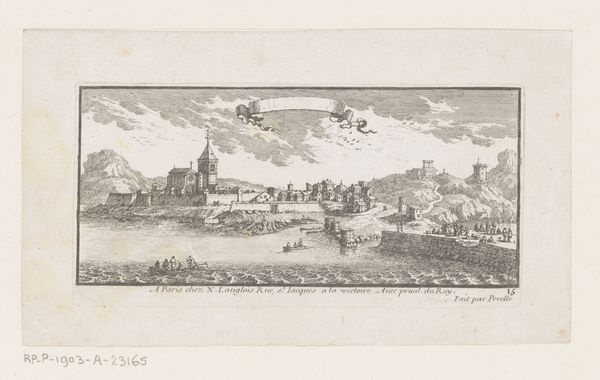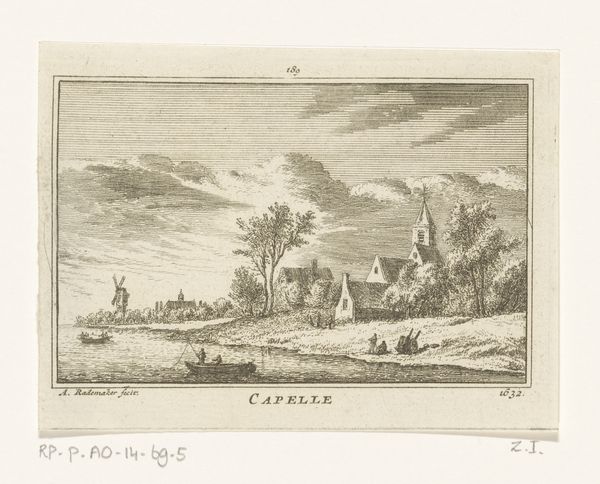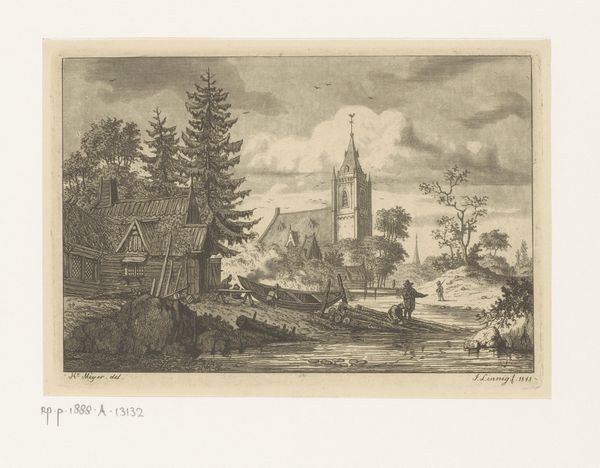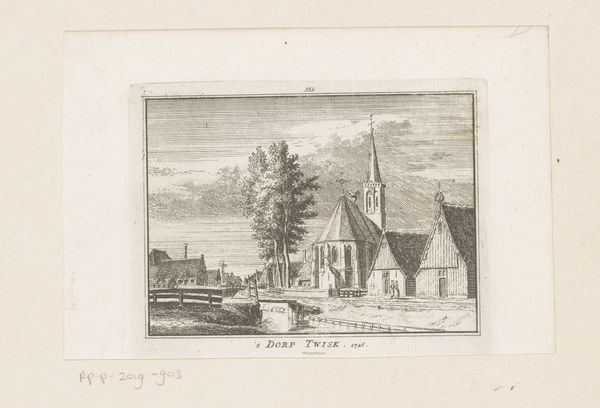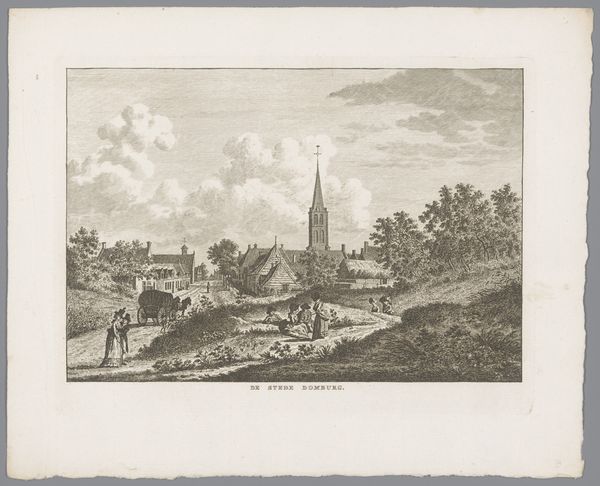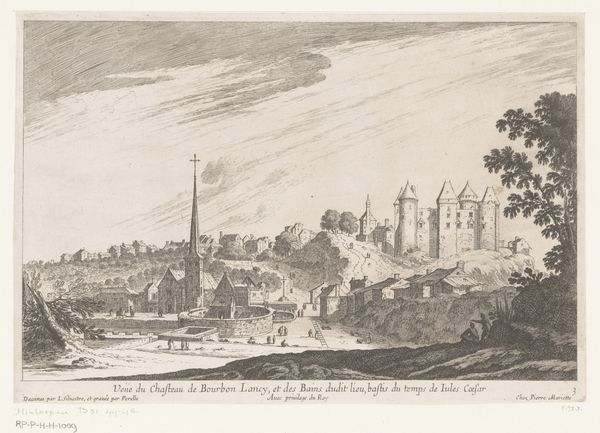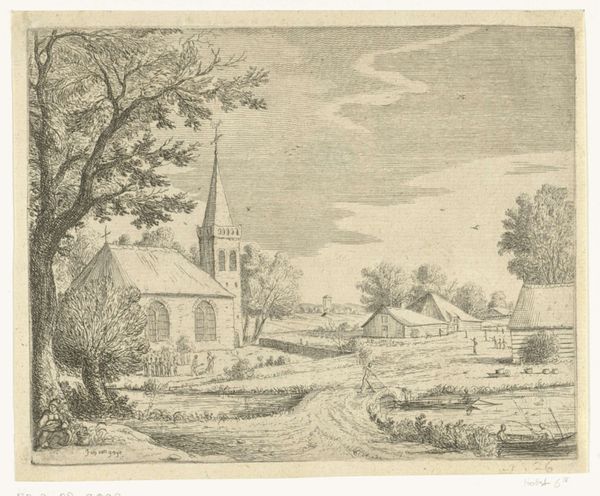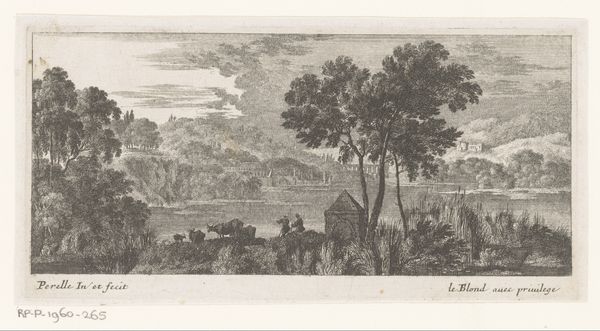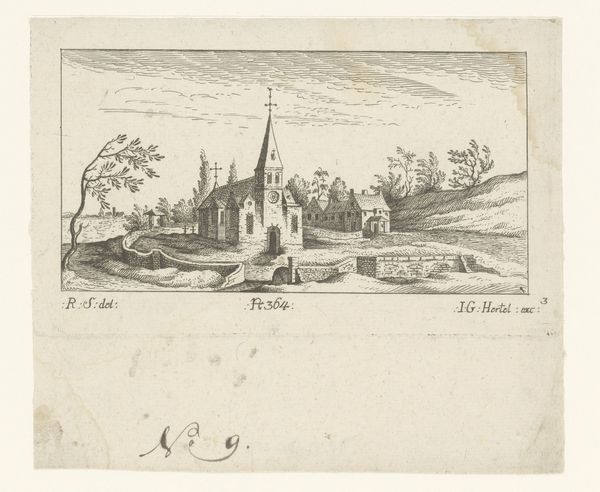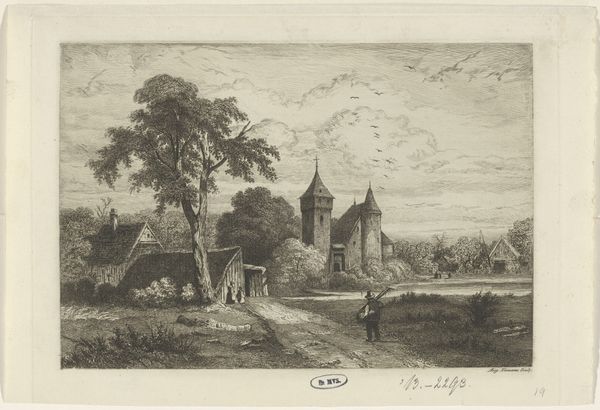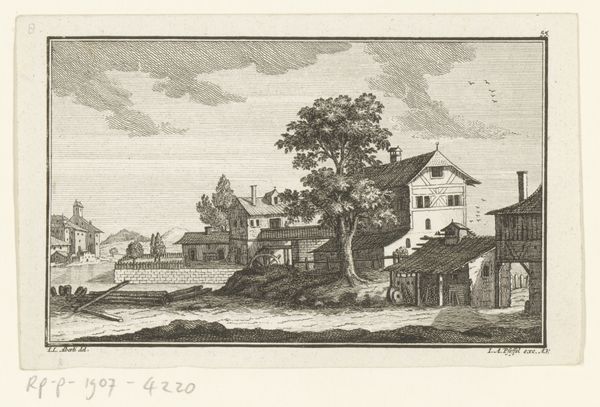
etching
#
dutch-golden-age
#
etching
#
old engraving style
#
landscape
#
etching
#
line
#
cityscape
#
realism
Dimensions: height 82 mm, width 112 mm
Copyright: Rijks Museum: Open Domain
Curator: Let’s consider this print, “Gezicht op Krimpen aan de Lek, 1632”, or View of Krimpen aan de Lek. Abraham Rademaker produced this etching sometime between 1725 and 1803, offering us his interpretation of the town. Editor: It's fascinating, though so subdued. I immediately notice the intricate details achieved through etching. You can almost feel the cool, damp air coming off the water. The marks on the paper reveal much about how these things were created. Curator: Absolutely. And what's particularly interesting here is Rademaker's vision during a time of significant political and economic shifts within the Dutch Republic. Prints like this were incredibly popular; disseminated widely as records but also drivers of cultural identity and a kind of collective self-regard. Editor: It’s so subtle though; even the figures in the boats are merely sketched in. These are definitely working vessels here and the focus is so firmly set on this precise place. Look how he's captured the reflections on the water. The making is almost as interesting as the place depicted. You can sense his working practices and methods. Curator: These kinds of town views served to remind people of the local community, showing the town's architecture alongside symbols of Dutch prosperity like those boats on the river. Also, notice the placement of the church which serves as a marker of social life during this time. Editor: True but there’s an interesting tension. He gives us realism, but realism made possible through artistic, highly skillful practices, grounded in labour, specific expertise and a command of the intaglio press. It's about precision as much as cultural symbolism. Curator: And that precise, widespread imagery played a crucial role. It gave ordinary people a sense of belonging within a burgeoning Dutch society that projected images of success nationally and internationally. Editor: Indeed. Seeing it in that broader manufacturing and socio-economic light offers quite a different insight. Curator: It certainly underscores the crucial intersection between place, printmaking, and Dutch societal narratives that bear scrutiny in times of conflict, commerce and change. Editor: Absolutely, examining how artistic techniques and production practices enhance or transform our understanding of works adds layers to what they meant and could become.
Comments
No comments
Be the first to comment and join the conversation on the ultimate creative platform.
